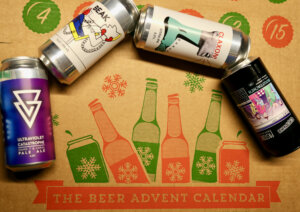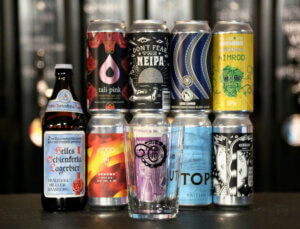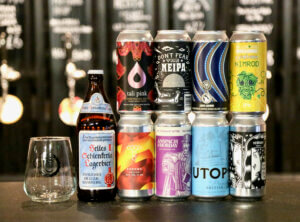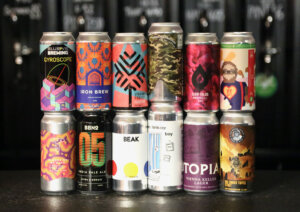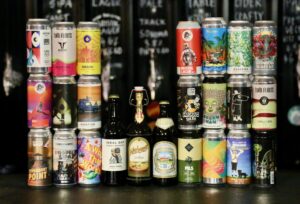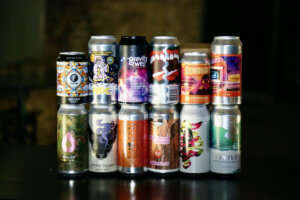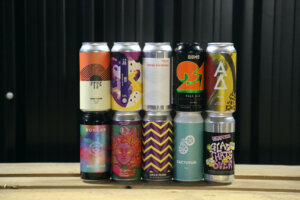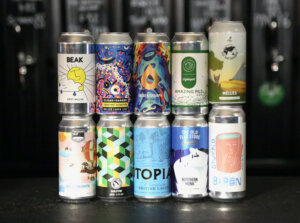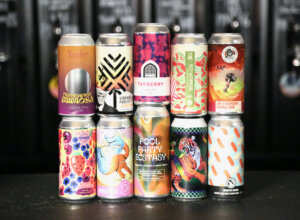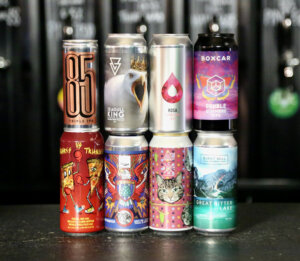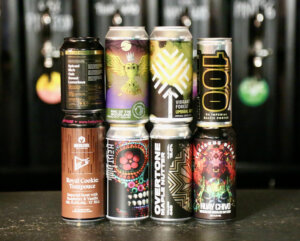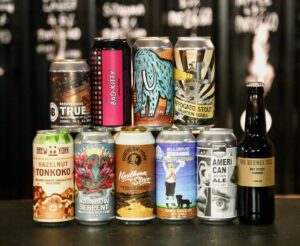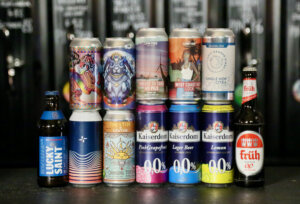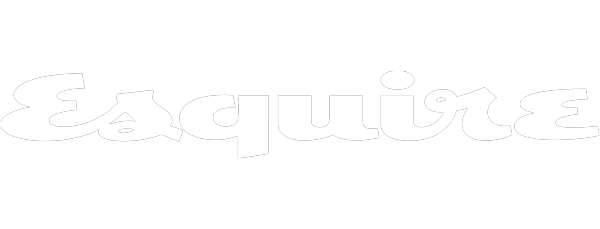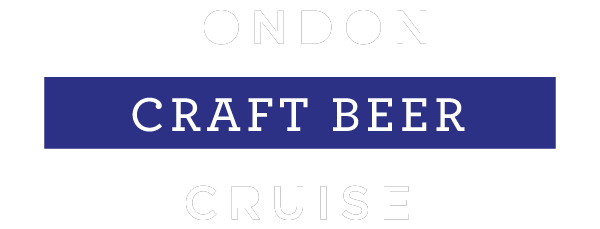Oli Meade
***LAST POST FOR XMAS IS MONDAY 22ND AT 1PM. PLEASE DO ORDER EARLY!***
For the most part, I’m pretty happy to pretend that Craft Metropolis – the online beer shop and taproom I run down in South London –is the only craft beer shop in the world.
Occasionally though, I find myself somewhere from which grabbing a beer from HQ would prove problematic. Like when I’m visiting family up north, for example. Or when I’ve taken a flight with a budget airline whose luggage allowance completely disregards how heavy beer can be.
In such instances, I’m always happy to support other independent beer shops. After all, beer shops are almost always staffed by friendly people, and I know from first-hand experience how difficult running an independent beer shop can be.
So recently, caught short about 15 miles from HQ, I darted into an independent taproom to see what I could find.
When I opened the door to eight beers on keg, my face bunched into a beam my moustache couldn’t hide. I was a beer shop owner in a beer shop, chomping at the bit to get stuck in.
I gravitated towards the bar, taking in exactly what it was I was about to work my way through. But as I did, a twinge of disappointment set in.
The eight taps before me were serviced by a lager, a pilsner, a radler and a pale… plus four different kinds of IPA.
Veteran beer fans might have spotted the problem with the above.
Lager and pilsner are very similar styles. The radler is the same thing paired with lemonade. Then you’ve got the pale and four – four!– lines of IPA.
Now, don’t get me wrong. I adore hop-forward beer. I respect its role in steering curious drinkers away from Bud Light.
But I like beer in all its other forms too! Stouts, bitters, porter; sours and experiments are glorious.
For me, the existence of a taproom with such a stripped back selection suggests, somewhere, something’s gone wrong.
In truth, situations like the above have probably been threatening for a while. For years, both beer drinkers and brewers have harboured an unhealthy fixation on a narrow range of styles.
West Coast hoppy beers began the trend. For a long time, alongside lager, they were the champions of taprooms worldwide. But their characteristic bitterness was always something some drinkers disliked… which meant taprooms always offered exciting alternatives.
If there has been a turning point, it was probably shortly after the birth of the New England IPA.
New England IPAs forego bitterness in favour of sweet notes. They’re smooth and they’re creamy. And they’re typically full of luscious and juicy notes of tropical fruit.
Frankly, they’re outstanding.
Which may well be the problem.
Following the rise of the New England IPA, has a certain style of beer become just too good?
The chances are I’m overreacting. After all, although hoppy beers continue to dominate beer shop line ups, few taprooms today offer no darks nor sours whatsoever. Until recently, doing so made little business sense.
Still, the fact that it’s now viable to run a taproom absent of variety is concerning.
And consider our current government’s recent beer duty ‘cut’.
The cut, at least when announced, only applied to beer sold in containers of 40 litres or more (at the time of writing, this is being reconsidered following a backlash). The idea, some say, was to skew the playing field in favour of ‘big beer’: big breweries sell beer in great quantities, while craft breweries tend to sell beer in 20 or 30 litre batches.
Whether or not it was a deliberately nepotistic move is the subject for another day. More relevant for the time being is, if the plans go ahead, brewers now have a further financial incentive to brew more of their popular lines and less of their small batch stuff… presumably making things even more homogenous than they already are.
Back in the taproom, chatting with the bartender and trying one or two of the beers, I raise my contention.
It’s a relatively hop-focused lineup, I say. And he understands what I’m referring to.
‘It is usually more varied,’ he notes. ‘We usually have…’ he turns to look at the line up. ‘Well, we usually have at least one sour on.’
For a second I consider asking why just the one – or where the sour is today, but I decide against it.
Instead, I choose which of the IPAs I want to drink first (Lonely Town by Howling Hops. A gem both tropical and resinous.), then I find myself a table and begin formulating the ending of this column.
Hoppy beers are fantastic, but what if they were just the beginning?
Experiment and explore and you’ll very much be rewarded. If you’re curious, here are one or two pointers to get you started…
Black IPAs are a great second step in beer exploration, because they pair lovely juicy hops with dark, roasted malts. Think of a beer that’s like a dark chocolate fruit & nut. Seek out Brick / Neon Raptor’s Black Light Black IPA or Wander Beyond’s Pod Impy Black IPA.
Biscuity, malty bitters tend to be popular in autumn, but there’s really no reason not to enjoy one as spring fades. Try Burnt Mill / Kyoto’s Other Worlds Extra Special Japanese Bitter or Yonder’s Boogie Modern Bitter for a modern version.
They’re potent but great. Think chewy caramels and toffees. DEYA / Boxcar’s Crocodile King Barley Wine was great. North Brew Co’s Good Things x North Barley Wine is a winner.
Roasty and toasty. Fans of coffee, take note. You can usually get hold of Pressure Drop’s Fashion London Porter. If you’re lucky, Kees Brewery’s Export Porter 1750 may be around.
Can be down-the-line or wild, wacky and wonderful. Look to Kernel’s Imperial Brown Stout London 1856 for the former and Amundsen’s Cherry & Chocolate Ganache Barrel Aged Dessert in a Can for the fun.
Different strands exist, but this isn’t a science lesson. Seek out Vault City’s Farm to Fermenter range. Brew York’s Le Mon Le Mon Imperial Lemon Sherbet Sour is fun.
Lager is the biggest selling style of beer in the UK so I sat down with lager specialist and Lost and Grounded co-founder Alex Troncoso as part of my look into innovation in craft beer to see where it sits in the independent scene.
– Your Keller Pils has become a huge success, was becoming a specialist lager maker the intention from the start?
Sometimes great things happen by accident, but Keller Pils was very much intentional. When we set out to create the brewery we decided we would focus on this somewhat obscure lager style as we needed a clear reason to exist – there would be no point to try to compete with the dozens of other filtered lagers on the market.
Starting with the end in mind – making an amazing lager – we then set out to design the best possible brewery we could knowing what we would need: we installed a mill so we could have flexibility in malt supply (currently we use Dingemans from Belgium), we knew we would need a mash tun where we could do various temperature rests or decoctions, and a very efficient boiling system to produce very clean and pale wort. But a key aspect of our lager brewing is how to deal with the alkaline water of Bristol which is definitely not ideal for brewing… to over come this we installed a biological acidification plant (lactic acid plant) which is the traditional German method of dealing with alkaline water. In this system we have lactic acid bacteria isolated from the husk of malt which is continually producing natural acid for us – we use this acid to adjust the pH of all of our beers during boiling.
So making lager was 100% the focus when we set up the brewery – this has taken a lot of dedication and a clear long-term vision as ultimately we have needed roughly double the tanks if we were to only make pale ale for instance.
– Why lager? Do you just love the style?
It was a bit of an evolution which happened over my career. When I started in brewing all I wanted to make was Pale Ale, and I had an amazing 8 years with Little Creatures in Australia where that was our focus. However, over the years I started to become obsessed with how to make the most simple of beer styles – lager.
From Little Creatures we moved to London where I took up the position of Brewing Director with Camden Town Brewery, which was a decision based on wanting to immerse myself in lager production. I spent a lot of time in Germany and Belgium, and slowly but surely I became increasingly fascinated by the world of lager.
And then along came Keller Pils…
– Tell us a bit about lager we might not know…
I think that lager is largely misunderstood in that it is really a technique and philosophy, it’s not just a matter of putting a specific yeast into some wort and it pops out as lager.
Amazing lager comes down to numerous choices – water treatment (incl our acidification plant), mashing, lautering and boiling regimes, wort cooling temperature (we go quite cold at 8C), yeast strain, fermentation and maturation profile, and lastly it’s about time – traditional, high-quality lager is a cold process and it takes time; we typically make Keller Pils in 4-5 weeks. Amazing lager also takes good production rhythm to keep the yeast happy – so much of quality really comes down to the yeast and how it is performing – it can be really difficult to produce great lager on a sporadic basis.
– How much of the business is making lager, your core beer?
Making core lager is the vast majority of what we do. Keller Pils and Helles comprise 80% of our volume. As we have 12 x 150HL lager tanks we always keep an eye on batches and it is amazing to taste Keller Pils at 2, 3 and 4 weeks and realise how much the lagering process improves the product.
– Lager has had a bad rep in the UK in the past, that’s changed right?
Ha, we wish! There is definitely more accounts that are interested in stocking amazing lager, but there is still quite a battle to be won against the bigger, well-established brands with large advertising budgets.
– Keller is thought to be the best UK indie lager, how’s that feel?
It’s feels amazing to have the recognition after setting out on what many thought was a crazy business plan, but we got there… it wasn’t easy! Our recent World Beer Cup Gold award for Keller Pils in Nashville, USA was a particularly sweet moment: the WBC is the largest competition in the world and the the judging is very rigorous – to have Keller Pils beat nearly 90 other kellerbiers from around the world was a great feeling.
– What’s it’s success?
Good question… we often talk about this and I think whilst it is refined and balanced, there is a certain boldness about it when compared to other lagers. It’s lemony and zingy, 30IBUs and definitely has a house “Lost and Grounded” character to it which stems from the raft of choices we’ve made along the way. We find once people are Keller Pils fans they seem to remain on the journey.
– Did you use anyone or anything as a base or for inspiration?
The inspiration for Keller Pils came from a trip to the hop harvest in Tettnang – I had a Kellerpils from a local brewery and had a lightbulb moment: what if we made a simple lager, unfiltered, using only traditional hops and make that our focus. Over the years little has changed in terms of recipe – still the same hops, although the base Pils malt can change from season to season. All we’ve done is gotten better at it over the years.
A little bit of inside info: the lake on the Keller Pils label is actually inspired by Lake Constance with the hop fields of Tettnang in the background
– If you’re not drinking your own lager what lager do you drink?
German lager is my favourite genre due to the clean nature – I love the classics like Augustiner and Tegernseer through to the bitter Jever – so good! On a recent trip to Berlin Weihenstephaner Helles was the beer of the trip – faultless and such a pleasure to drink.
– Who else in the industry inspires you?
For both Annie and I we love to see breweries that have a clear philosophy. Burning Sky would have to be one of our heroes as Mark and the team are very humble, make amazing beers, and have always done things their own way. The dedication shows.
– Any grand plans for 2024?
Ha, take some time off? But on the brewery front we will be installing a new keg line to keep up with demand – in summer 2023 it was tough to meet demand, so the team is looking forward to being able to keg faster, empty tanks quicker, and especially looking forward to having a new whiz-bang keg lifter as manually handling over 300 kegs a day takes it’s toll on the crew!
Beer is one of the oldest and most widely consumed alcoholic beverages in the world, with a rich and fascinating history dating back thousands of years. From its early origins in ancient civilizations to its present-day status as a global industry, beer has played a significant role in shaping human culture and society. In this article, we will explore the history of beer, its various styles and brewing methods, and its cultural and social significance throughout history. Whether you’re a seasoned beer enthusiast or just curious about the world’s favourite beverage, join us on a journey through the fascinating and complex world of beer.
Beer has a long and storied history, with evidence of its production dating back to ancient civilizations. From its early origins as a simple fermented beverage to its present-day status as a global industry, beer has played an important role in human culture and society.
The earliest evidence of beer production dates back to ancient Sumeria, located in what is now modern-day Iraq. Sumerian cuneiform tablets, dated to around 4000 BCE, contain recipes for beer made from barley, wheat, and other grains. The ancient Egyptians also brewed beer, with hieroglyphics depicting beer production and consumption dating back to 5000 BCE. Beer was a staple of the Egyptian diet, with workers receiving a daily ration of beer as part of their wages.
Beer also played an important role in ancient Greek and Roman societies. The Greek god Dionysus, the god of wine, was also associated with beer, and the Greeks brewed a variety of beer-like beverages, including ales and meads. The Romans, meanwhile, were known for their use of herbs and spices in beer production and for their development of large-scale brewing operations.
The alcoholic beverage continued to be an important part of European culture throughout the Middle Ages and into the Renaissance. Monks played a key role in brewing beer, with many monasteries producing their own beer to provide for the needs of their communities. In fact, many of the classic beer styles still produced today, such as Belgian Trappist ales, have their origins in monastic brewing traditions.
The Industrial Revolution of the 19th century brought significant changes to the beer industry, with the development of new technologies, efficient drink storage and the growth of mass production. The invention of the steam engine allowed for greater efficiency in brewing, while the development of refrigeration technology made it possible to produce beer year-round. The growth of the railroads also allowed for the distribution of beer on a much larger scale, leading to the rise of major brewing companies.
In the 20th century, beer continued to evolve, with the development of new styles and the growth of the global beer industry. The rise of craft brewing in the 1970s and 1980s led to a renewed interest in traditional brewing methods and the development of new and innovative beer styles. Today, the global beer industry is a multi-billion-pound industry, with a wide range of styles and flavours available to beer enthusiasts around the world.
Interesting Beer Facts

Oli Meade
This week, I’m taking a look at a big new Triple IPA from Wisconsin’s The Brewing Projekt, one of the best pilsners I’ve ever, ever had and Beak’s new “near perfect” West Coast IPA!
Before all that though, when Wiley Roots sent us a new beer called Thomas the Dank Engine, I had to check it out.
My thoughts?
Read on, read on. All will be revealed…
Colorado’s Wiley Roots delivered us six of their lines this week, including an Orange Milkshake DIPA, a Vanilla Milkshake IPA and a Chocolate Marshmallow Impy Stout, so it’s saying something that I’m highlighting Thomas The Dank Engine in particular.
But then I had no choice: this is a stand-out piney DIPA that’s as dank as they come!
Funky, green, thick and oozing resin, it deserves the name, the can art is great, if you’re going to try one Wiley Roots brew this week and you’re into your hops, give this a bash!
The Brewing Projekt are another new US brewery just in this week, again with a smorgasbord of beery deliciousness for you to choose from.
They’re the people behind the wicked Puff Tart XL Pineapple Mango and Puff Tart Raspberry/Vanilla/Guava sours, and they’re also behind two new in TIPAs, including Triple Header TIPA.
This new TIPA is smooth, it’s juicy, it’s hoppy, it’s sweet, it’s also wonderfully boozy, it really does have it all.
Our haul from Tennessee’s Southern Grist, meanwhile, was very much sour focused – and exotic sours they sure as heck were!
I mean, a Peanut Butter S’mores Sour? How does that work?!
The Mango Coconut Sour is equally as outrageous, but the Blueberry Banana Pancake Sour is my pick of the bunch.
Lactose makes this super smooth, banana brings in sweetness, the blueberries introduce tartness and then maple syrup tops things off. Superb!
Gurr is what I *think* is Beak’s first ever West Coast IPA, which has been described on Untappd as “damn near perfect”.
It holds back on the juiciness of the NEIPAs of Beak before, instead ramping up the resin to syrupy heights.
A bitter, hoppy finish lets you know what you’re dealing with.
Another Beak, another brilliant, brilliant, brilliant beer.
(Gurr’s juicy cousin, Locals IPA, is now in, too!)
Juice maybe isn’t something you’d associate with West London’s Weird Beard, but in The Manipulated Dead DIPA that’s exactly what you get.
In this amped up DIPA version of The Manipulated Living IPA, expect lashings of classic Galaxy, Amarillo, and Mosaic for big, juicy, hoppy flavours, plus oats and wheat for a smooth and delicate mouthfeel.
Pressure Drop’s 150 Friends is also fresh out the blocks and receiving rave reviews for being a perfect tropical NEIPA for summer nights.
As the name implies, get a few mates together outdoors, and crack one or two cans.
Lots of pineapple going on here, dark and rich juicy goodness.
Rothaus Pilsner is hands down one of the best pilsners I have ever, ever tried!
I’m embarrassingly late to the party here considering the Rothaus set up has been rolling for centuries, but this truly is exemplary brewing. Clean from the off which develops into a subtle bitterness, it’s got me hooked and I keep coming back time and time again.
Like everyone I’m absolutely loving rediscovering great lagers at the minute and I’m excited to have a MONSTER pallet of these sorts German/Czech style beers on the way. Until they arrive I’m on this – and you should be too!
Where Rothaus respect time-honoured brewing traditions, Yonder rips up the rulebook and still comes up good with their new Peach Peng Peach and Green Tea Sour.
It kind of sounds a bit nuts on paper but think of it as big, juicy peach sour with a subtle herbal undercurrent to make sure things don’t go overboard on the sweetness.
It’s an expert twist that makes this a summer delight.
Slim pickings on the dark front at the moment, I know.
Rest assured we have a lovely back catalogue that’s been aging nicely, stuff like Amundsen’s Coconut Choc Chip Cookie Barrel Aged Dessert in a Can and, of course, Hammerton’s Crunchier Imperial Chocolate Peanut Butter Stout Milk Stout, but on the new-in front, how does Unbarred’s latest Imperial Bueno Shake sound?
Chocolate. Wafer. Vanilla. Hazelnut. It’s a Kinder Bueno of a beer!
Watch out Amundsen, this is Unbarred’s “pudding in a can”.
On the alcohol-free front we have more Rothaus, in particular an AF hefeweizen and also a beautiful AF pilsner. (We’re ramping up our AF section right now – we’ll probably even have a load more Big Drop AF stuff online by the time you get this!)
Meanwhile SMOD have never been scared to brew just what they want, as their new Köelsch proves. A hopped up kölsch for summertime fun. Pressure Drop are also in on the lager charge with Synth Division Köln Style Beer.
Phantom’s new Blackberry & Pomegranate Sour Echoes caught my attention this week. As did Dig’s Raspberry and Madagascan vanilla sour ale. And how good does Howling Hops’ sweet apricot and guava sour Whisper Kicker sound?!
Weird Beard’s Pucker The Pain Away Peach Melba Sour is of the same ilk… with a sprinkling of vanilla to keep things sweet.
Burnt Mill prove they’re as sophisticated as ever with tropical hop-bomb Cassiopeia NEIPA, and Pressure Drop follow with their Nelson Super Pale, while Phantom’s hop contributions this week include Summer Pale and the dripping-in-pineapple Sleeping Lions IPA.
This week, of course, the imports ruled, so have a root around and see what you can find. Hop-wise, the Brewing Projekt’s Serious Business NEIPA is worth a gander, as is Gunpowder IPA, while Brix City’s Sunrise Juice Milkshake DIPA is well titled and Just Another DIPA is anything but.
This is just the tip of the iceberg, so get stuck in and see what you can unearth. It’s a goldmine over here.
As always, I hope you get to try some of these new beers this week.
Cheers & happy drinking!
Oli
(The founder)
As cultural analysts delight in telling us, coronavirus has changed our lives in unexpected ways. Few echelons of society remain untouched. So preposterous as it seems, it’s perhaps worth asking: Has the pandemic changed our taste in beer?
Empirically, the question is almost impossible to answer. Anecdotally though, from where I’m sitting in my little beer shop, nationwide lockdowns have coincided with a rise in formerly out-of-favour beer styles.
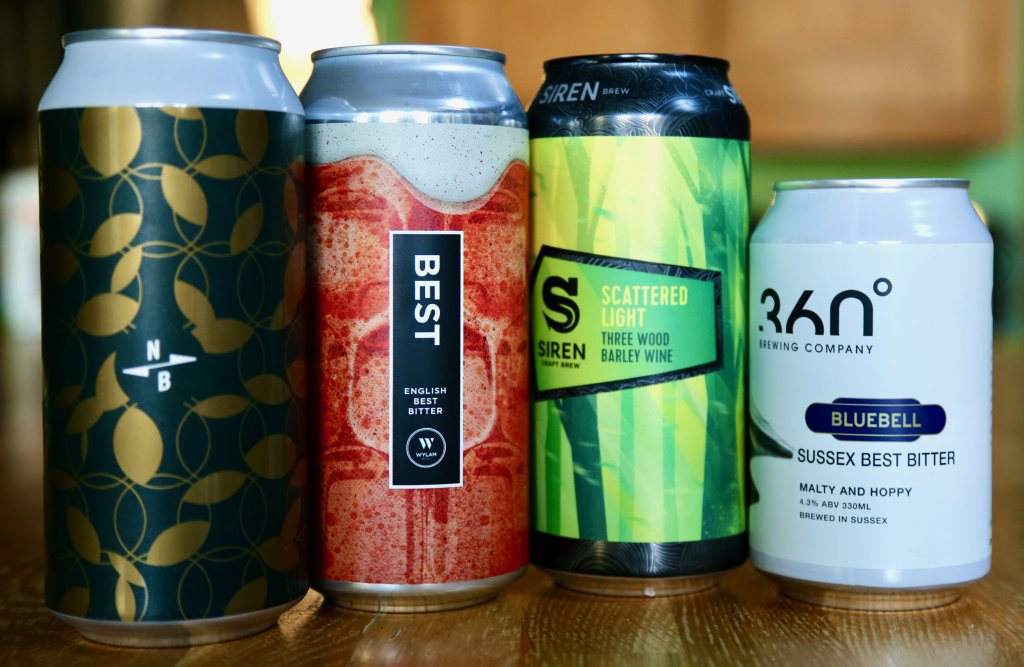
Pre-pandemic, there were more than a few up in arms about the decline of mild. After visiting the two historic breweries of Bathams and Holdens, the beer writer Roger Protz published a piece warning mild ales needed urgent support. At around the same time, Timothy Taylor’s renamed its Ram Tam mild Landlord Dark, in an effort to boost its meagre sales. So concerned had CAMRA become that the organisation launched it’s ‘Mild May’ initiative; an initiative designed to rejuvenate the mid-hopped, mid-strength, once-loved stalwart.
The similarly endangered styles of bitter and barley wine, meanwhile, cultivated much less attention. And that, of course, was the problem in action.
Beer tastes had changed, commentators declared. And there was no shortage of ‘craft’ breweries willing to satisfy a booming demand for high-strength, hop-heavy pints of novel nectar. The pale rose first. Then it was the IPA. Shortly after, the Double IPA shot to stardom. Our demand for innovation was, it seemed, relentless.
In fact, as far back as 2015, the Guardian’s Tony Naylor suggested craft beer had “called last orders” on mild. Over in the Telegraph, Chris Moss raised similar concerns.
Traditional beer styles were out. They were not coming back.
Five years on, coronavirus.
As far as I can tell, stuck inside, we longed for open pubs. We craved the safe cocoon of the familiar. We wanted comfort. We wanted nostalgia. Who could possibly give it to us?
Today, it seems the very same people behind the ‘death’ of traditional beer styles are now on hand to satisfy our deep urge for comforting nostalgia.
Who knows what the situation will be by the time you read this?
Either way, if it so happens that you, too, are looking for the reassurance of the time-honoured, you can bet there’s a mild, a mead, a bitter or a barley wine awaiting.
Craft beer has not called last orders on mild – or anything of the sort.
Modern takes on traditional classics
1. Boxcar – Dark Mild
Probably the most popular mild we stock, Boxcar’s Dark Mild is in huge demand amongst those who’ve supposedly given up the style. It’s rich, it’s dark, it’s very much full-bodied. Chocolate, coffee and caramel from the malts give it a nice complexity – without overloading the senses. And at 3.6%, it really is a mild.
2. Left Handed Giant – Dark Mild
Left Handed Giant’s new Dark Mild pays homage to its historic brewpub site. With notes of English hedgerow berries, smooth caramel and lightly roasted malt, it’s perfect once the sun’s gone down after a late summer’s eve. The 4% ABV just about sees it sneak in as a mild.
3. Wylam – Best English Best Bitter
Wylam’s Best Bitter is traditionally brewed with malted barley and whole cone English hops. Pale copper in colour, its toasty malt complexity is balanced with notes of ripe berry fruit and bitter orange peel. 4.5%.
4. North Brew Co. – Seasons Reverse Best Bitter
Leeds-based brewers North know what’s what. Into Seasons Reverse Best Bitter they’ve thrown chevallier, crystal, munich, amber malt and torrefied wheat for a fine, crunchy biscuit base topped with a layer of deliciously sweet marmalade. An all-English hop blend contributes earthy blackberry, sweet honey and a gentle floral pine aroma. 4.3%.
5. St. Mars of the Desert – Our Finest Regards Barley Wine
St. Mars of the Desert admit they’re neither cool, nor young, nor good looking. That, they say, gives them license to brew ‘this old school, out of season, malty and rich barley wine’. Expect juicy sultanas, maltesers and even a hint of marzipan. Crammed to the rafters with barley, as you might expect. 9%.
6. North Brew Co. / Good Things Barley Wine
North’s first barley wine, brewed in collaboration with fully sustainable brewery Good Things Brewing, is smooth and woody. Deep vanilla, bruised apple, warming spices and maple syrup run throughout thanks to the malt base, while whole leaf Bullion hops contribute a juicy blackcurrant-tinged bitterness. It’s easy to drink – far more so than it’s 10% ABV would suggest.
Kveik, Mild, Helles and Brut. At first glance you’d be forgiven for thinking you’d stumbled into the travel section of a magazine and were exploring potential retreats to a Scandinavian island. Thankfully not. Kievek, Mild, Helles and Brut are all in fact beer styles, and with brewers gearing up to showcase their takes on rather more challenging and on-trend styles during this year’s upcoming festival season, now is a great time to explore each. Pale ales and stouts are two a penny – the beers below are beers not to be missed.
Northern Helles by Donzonko Brewing
With every year in craft beer labeled as ‘the year of lager’, it’s important to never dismiss the classic and understated style of beer. Helles beers tend to have a sweeter and lighter edge – hell meaning ‘light’ or ‘bright’ in German. Unfortunately, it’s rare that anything actually lives up to the billing. Donzoko’s Northern Helles, however, does. Quite simply, if you don’t like this, you won’t like modern craft lagers. That’s a bold statement, I know. But Northern Helles is just about as good as it gets for a UK-based brew. Slightly malty and dark with a sweet edge, it’s a beer that flows down and one you can turn to time and time again. It’s so well executed you’d expect it to come out of Germany rather than Donzoko’s base in Hartlepool. It’s no surprise that Donzoko harbours a fixation with German brewing. The brewers label this “our version of a Bavarian Style unfiltered lager. Sweet malt, subtle floral hops and a crisp refreshing finish. Inspired by lazy days by the river Eisbach, this is our flagship beer that will change what you think about lager.” We can’t argue with any of that and, if Northern Helles is anything to go by, this really IS the year of the lager. Until next year, of course.
Haakon by Drop Project
Kviek is certainly riding a wave in the brewing world at the moment. It’s a type of Norwegian Farmhouse Ale yeast and, when used to ferment at certain temperatures, it “provides plenty of fruity esters and tropical top notes.” That’s basically a pale ale with a bit of funk, and it’s showcased wonderfully in Haakon, a full-flavoured pale ale by the new startup brewery Drop Project. The yeast is a little more sour, more acidic and more raspy (all in a good way, you understand), which leads to a more powerful beer. You still get all the classic pale ale notes but what you tend to get at the end of the sip is an interesting bite. Normally breweries would use bittering hops to give their brews a lingering flavour, but here Kviek takes over, making for something slightly different to your average brew. One to try from a brewery worth watching as they grow.
Zero Gravity by Lost+Found
Onto Brut. This little known beer style is exactly what you think it’s going to be… although if you’re thinking of an 80’s talcum powder you’ll be disappointed. Brut beers have risen in popularity over the last year as breweries seek out a sweet spot somewhere between a lager and a pale ale. This style bridges the two well and at the same time brings an air of sophistication to both. The name comes from brewers using champagne yeast or similar to drive the dryness of a beer down to near desert levels.
In the case of brut IPAs, all the wort’s sugar is converted into alcohol during fermentation thanks to a special enzyme called amyloglucosidase. With no sugar left to caress the palate, the resulting beer is totally dry. This all sounds rather specialist but in Zero Gravity Lost+Found have created a brut beer that’s as drinkable as the day is long. Too dry to be a beer but not winey enough to be wine, brut styles have historically been something of a flash in the pan. New styles keep popping up though, and with summer just around the corner you’ll be sure to find some somewhere near you.
Dark Mild by BOXCAR
When you think of a pint of mild, most minds conjure up an old midlands boozer with uninspiring cheap beer piled on every table as smoke lingers in the air mid-afternoon. “What’s wrong with that?!” I hear you cry. Admittedly not much… but the point remains that mild has long been in need of a resurgence, and it’s happening! BOXCAR are one of the most up-and-coming breweries in London (which itself houses a great many up-and-coming breweries), and they’ve taken on the challenge of making an exciting mild. The result is mild, yes. But not as you know it. Dark Mild has all the classic mild flavours but dialled up a level or two. It’s slightly sweet, brown and delicious. It’s about as far from a working men’s club as you could get – but, thankfully, still not a million miles from mild’s true roots.

Oli Meade
DEYA’s first ever Triple IPA, a show-stopping mild from Boxcar and an Iron Brew sour! Are you as excited as I am?
This week’s list is, once again, off the charts. Here are some of the best new beers to try this week.
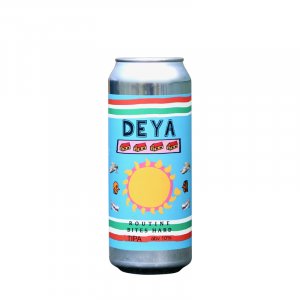
£8.75
Kicking things off, there really is only one place to start. DEYA have released their first ever TIPA!
Routines Bite Hard calls in a truck load of punchy Simcoe and Mosaic to create a 500ml, 10% juice monster from a brewery at the very top of their game. Does it need more hop variety? Absolutely not! It’s everything you’d imagine and then some – the first ever DEYA Triple. For us, a must try.
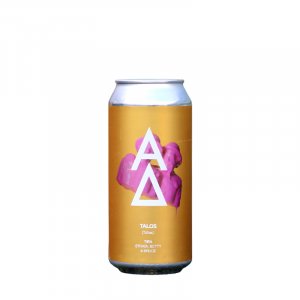
£7.50
Meanwhile Alpha Delta weren’t about to let DEYA’s TIPA go uncontested. This week, they launched Talos TIPA – so thick, so hoppy… this thing is like a soup. A DEYA beater? You’ll have to decide that one yourself…
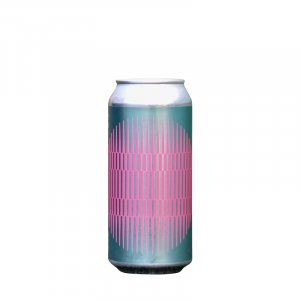
£5.75
Overtone’s Plur DIPA set social alight this week with a gaggle of excited beer fans singing its praises – and rightly so. I’ve been banging on about Overtone’s genius for months, and it seems like people are finally starting to catch on! This 5-hop monster (Galaxy, Citra, Azacca, Simcoe, Chinook) is a cascading waterfall of tropical fruit gold – epic stuff, get involved!
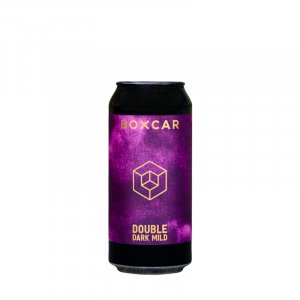
£5.50
Set the stouts aside for a second: Boxcar’s Double Dark Mild tops our list of the best new dark beers this week! As if the original wasn’t good enough, this is an amped up, tricked out, double-dosage version. More malt! More chocolate! More raisin! And oh-so smooth.
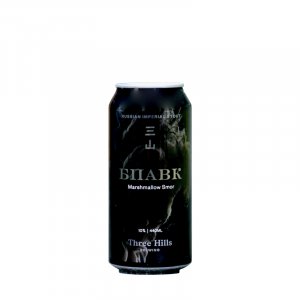
£7.95
At spots 4, 5 and 6 this week you’ve got three new releases from the B.P.A.V.K series that are as un-ignorable as ever. Which is better?! Three Hills Marshmallow Smor Imperial Stout? Or the Cherry Bakewell Imperial Pastry Version?!?
It’s such a close call but, for experimental outrage I’m gonna go with the Marshmallow Smor. Oh, and there’s a suave and sophisticated red wine version too!
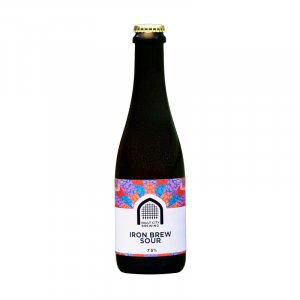
£7.50
Just when you’re wondering what Vault City have been up to of late, they go ahead and lob an Iron Brew Sour at your face! How is this possible?! What the hell is even in Irn Bru in the first place??! In this boozy version you’ve got a bubblegum-citrus sour that pours as orange as the original. It’s equally mysterious. And equally magnificent.
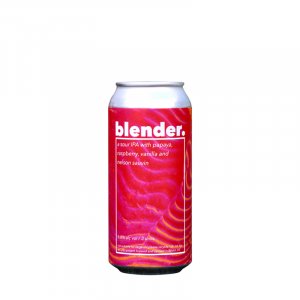
£6.95
Finally this week is Left Handed Giant’s Blender Fruited Sour IPA Mark 3… a sour that apparently gets better with every iteration! In this one you’ve got Raspberry, Papaya and Vanilla intermingling with fruity and piercing Nelson Sauvin hops, all combining for a sexy sweet treat with serious fruited zing.
Fair enough. Well, elsewhere this week, you’ll find two new Polly’s hop-bombs on our virtual shelves, starting with a new issue of Polly’s Uncanny Valley IPA. This is, naturally, packed full of all the pineapple, mango, and papaya notes you know and love. Polly’s Magnolia Pale Ale is a more experimental mix of coconut, lime, ripe tangerine and 20kg of Citra hop dose. Both are as thick as ever.
Ārpus Brewing’s Secret Hops IPA is a fun IPA all the way from Latvia. Any idea what they’ve used to hop this? Test your inner nerd. See if you can work it out.
Talking of nerds, check out the epic new wax top range from Nerdbrewing themselves! There are six insane Nerdbrewing darks now online, and I’m torn between Nerdbrewing’s Typecast Imperial Licorice Lemon & Vanilla Stout and Infix Vanilla Macchiato Edition. They come at a fair old price point – but, luckily, you really can’t go wrong.
Talus hops are hops of the moment, and Signature showed us why with their new Nocturne Black IPA this week. A freaky, unintentional 6.66% ABV bundle of gnarled tropical fruit. See what Talus is all about.
There’s also a big Anspach & Hobday drop going on (Ordinary Bitter is a personal favourite), Alpha Delta’s Corymbus Blackcurrant & Blackberry Imperial Sour Ale is a 10% treat and Little Monster are back with their much acclaimed Squash Court DIPA and some epic can art on Back Home IPA – liven up your fridge!
As always, I hope you get to try some of these epic new beers this week.
Cheers & happy drinking!
Oli
(The founder)
Sour beers used to sit solely in the expert realm of the Belgian specialist or the hardcore beer nerd.
But these days, sour beers are bursting into the mainstream more and more – especially as sour beers are no longer just for summer.
So with that in mind, in this post we look at some the best sour beers and sour beer makers operating both here in the UK and abroad.
Whether you’re just getting into sour beers or you’re expanding your repertoire, these are breweries you’ll want to check out.
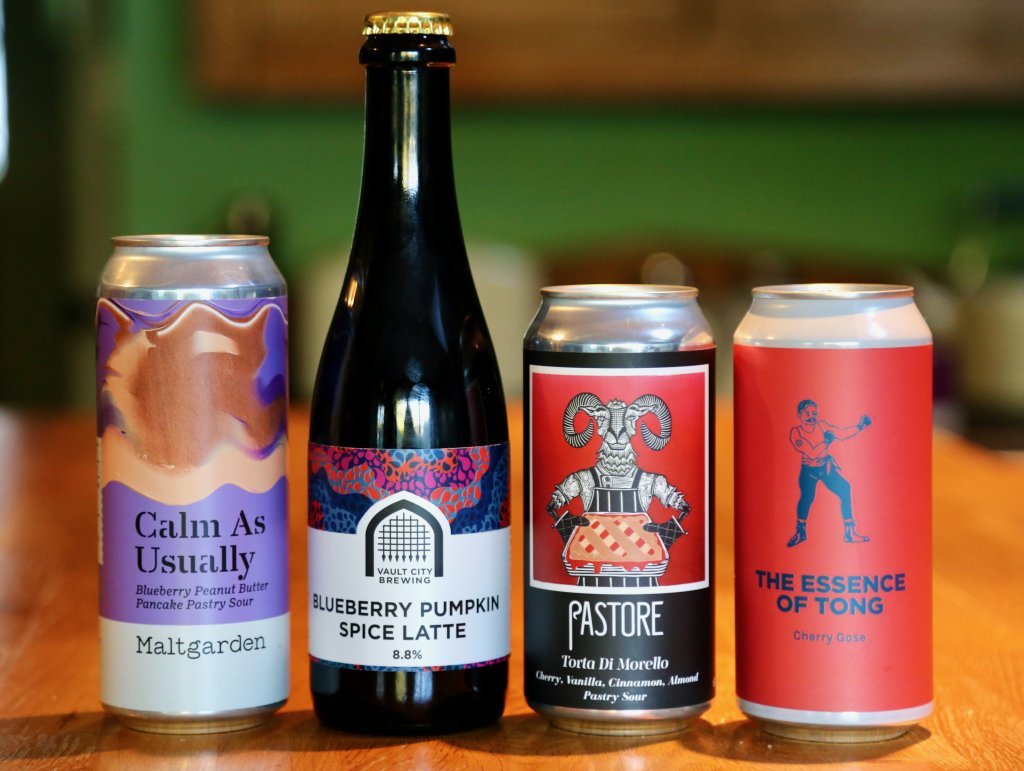
Most of the very best sour beers are either seasonal or one-offs. Craft breweries make them, at most, once a year. Then they try to make something even better.
That kind of means that looking for the ‘best sour beers’ in general is a bit futile – because that list changes month by month.
So what you really need to take note of is the best sour beer makers. Because – trust us – their latest sour concoctions will always be amongst the best sour beers you can buy at any one time.
Still with us?
Great.
If you like sour beers, then you need to check out what the latest beers of the following breweries…
Like their name suggests, Vault City used to be pretty hard to come by – almost as if they were only accessible to beer-tickers armed with bumbags and tasting notes booklets.
Recently though someone unlocked the gates, and beers from these Scottish sourmeisters are now popping up in most good bottle-shops and online beer shops with their weird an wonderful wares.
One thing that should sharpen your attention towards this brewery is that they are sour specialists – and to be more specific, sours are all they make.
At the very heart of Vault City Brewing lies their house mixed-culture. A bit like the sourdough starter yeast, a sour brewery’s house culture is their foundation. It has to be pretty special to create something so unique.
Vault City use a blend of Kveik and Lactobacillus strains which provide us with delicious tropical esters and a deliciously tart acidity. These esters are added to the pulps of real fruit in Vault’s amazing concoctions to make fresh, smoothie-tasting brews.
They have created “straight up” versions like Strawberry and apricot session beers, and have an amplified version of these too – typically reaching 8 or 9% ABV.
If you fancy something a bit more wild they have dabbled with spiced pumpkin, tayberry (it’s like a redcurrant I’m told) and vanilla.
Latest fun releases include a cheeky Vimto sour and a Havana special! I don’t think there’s a better UK brewery at using natural ingredients in their sour beers. Vault City beers are very much worth unlocking.
We first stumbled across Polish brewery Maltgarden when one of our best customers told us in glowing terms about some of their hoppy beers which he’d managed to wrangle on a beer-swap night.
Knowing Charlie was a bit of a top-end craft beer nerd, we knew they must be something special so we got hold of some swiftly to try for ourselves. He wasn’t wrong; Maltgarden make huge hoppy modern beers.
Then we discovered their dark beer range which was even better – full of peanut adjuncts with lashings of coffee, toffee, banana and chocolate all over the show (there’s even a wax topped can but that’s for another time).
We then learned that they made mad sours too – is there anything this brewery cant do? (They actually haven’t made a lager but that’s not the point!)
Maltgarden are certainly a brewery to seek out if you want a range of flavours that really push your palate. The newest sours from them include additions of dragonfruit and mango.
As we say, they like to play wizard a little bit and don’t be surprised to see the juxtaposition of nuts and spices added alongside the sour notes to really compliment but also throw your tastebuds.
If a warm can of Tyskie is your only experience of Polish beer change that right now!
Pastore Brewing and Blending is a mixed-fermentation sour and wild brewery, and everything about this brewery hints at the exotic.
The name itself makes your mind maybe wander to a small, hidden Spanish village, and Pastore’s can artwork and font drag your thoughts out to a sleepy Moroccan fishing village. Almost disappointingly, Pastore are actually based on an industrial estate near Cambridge.
Where Vault City are possibly the UK’s best sour makers for fun brews, Pastore are a more refined and subtle competitor.
The emphasis here is on accessible, fun, modern takes on mixed-ferm brewing (which just means using different yeasts in one brew, including wild ones), and the technique helps ensure Pastore sours deliver every time.
Although the basis of all their beers is in the old school of sour brewing, there’s enough fun ingredients and flavours poking through to open the doors to the non-expert beer fan. The newest beers on our shelves are perfect examples of this.
Torta Di Morello, for example, is a cherry pie pastry sour, conditioned on morello cherry puree, cinnamon, vanilla and almond. How good does that sound?!
They are a brewery we love supporting. Not only do they make some of the most rounded sours about, they are a tiny operation even by craft beer standards, a story made even sweeter by the fact the brew team are family father and son combo of Ben and Chris Shepherd.
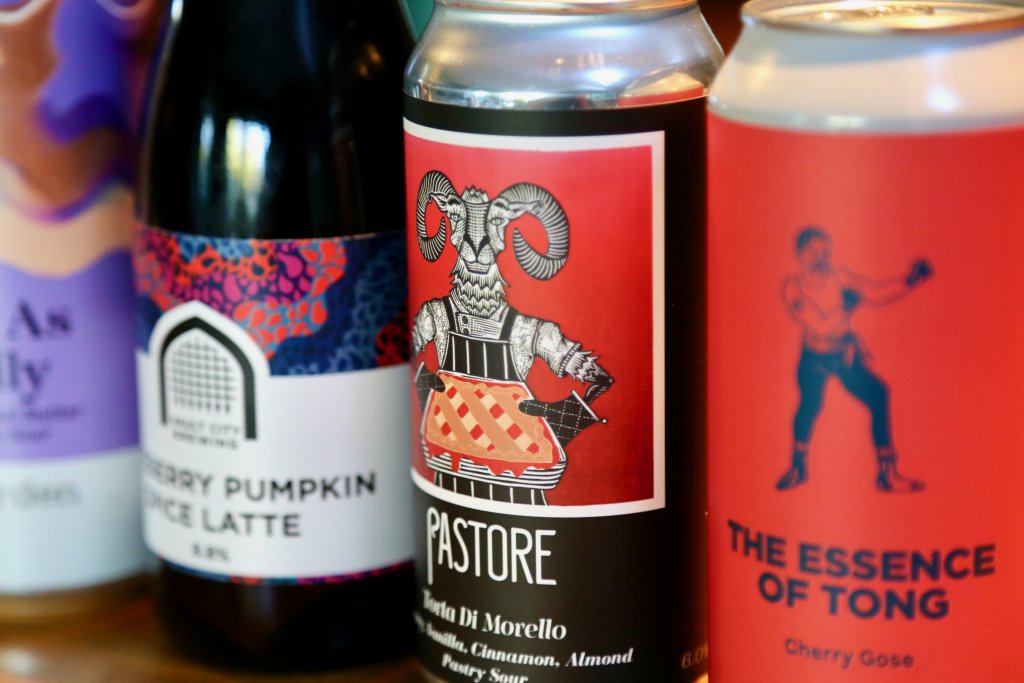
We get new Pomona Island beers in pretty much every week, and with good reason.
Again Pomona Island are a brewery that seem to be able to nail all the styles of modern beer going. It’s testament to their quality that we can talk about their sours when we could easily feature their dark offerings or hoppy monsters in round up posts elsewhere. It’s also testament to their amazing beer that we tend to cherry-pick their beers from the fifty or so new beers we get each week to drink ourselves for pleasure (yes it’s one of the worlds best jobs!)
Pomona sours somewhat launched the brewery to the relative mainstream in craft beer circles with brews that were tart but not too tart, flavoursome but not messy and crazy but easy drinking. It’s a hard thing to manage, especially time and time, again but Pomona manage it.
A relativity small operation based in Salford near Manchester, Pomona seem to bring out a pale, IPA and sour each week, so there’s always something interesting and new to go at!
Whatever sour you end up drinking – enjoy.
Thanks for reading out craft beer blog this month. Drink and be happy.
Oli, Craft Metropolis founder
Five years ago, when my online craft beer club (as it then was) first sprang into existence, Craft Metropolis stocked only beers from specialist, London-based craft breweries. It gave the club a new slant on an existing concept. It allowed us to operate as a tiny business in a market dominated by one or two major players. And, as was the case more than once in the early days, it meant I could drive around London to pick up stock and deliver orders whenever a ‘reliable’ supplier let me down. More than a few companies go on about their commitment to personal service these days. I wonder how many of their owners are willing to drive to their customers’ homes to meet delivery deadlines?
That was five years ago. In time, we began to branch out. Tastes developed. As did demand. Today, as well as continuing to support local craft breweries, we’re increasingly supporting some carefully selected craft breweries from outside the UK. Seeing as we all love good beer, could I maybe introduce you to three such gems?
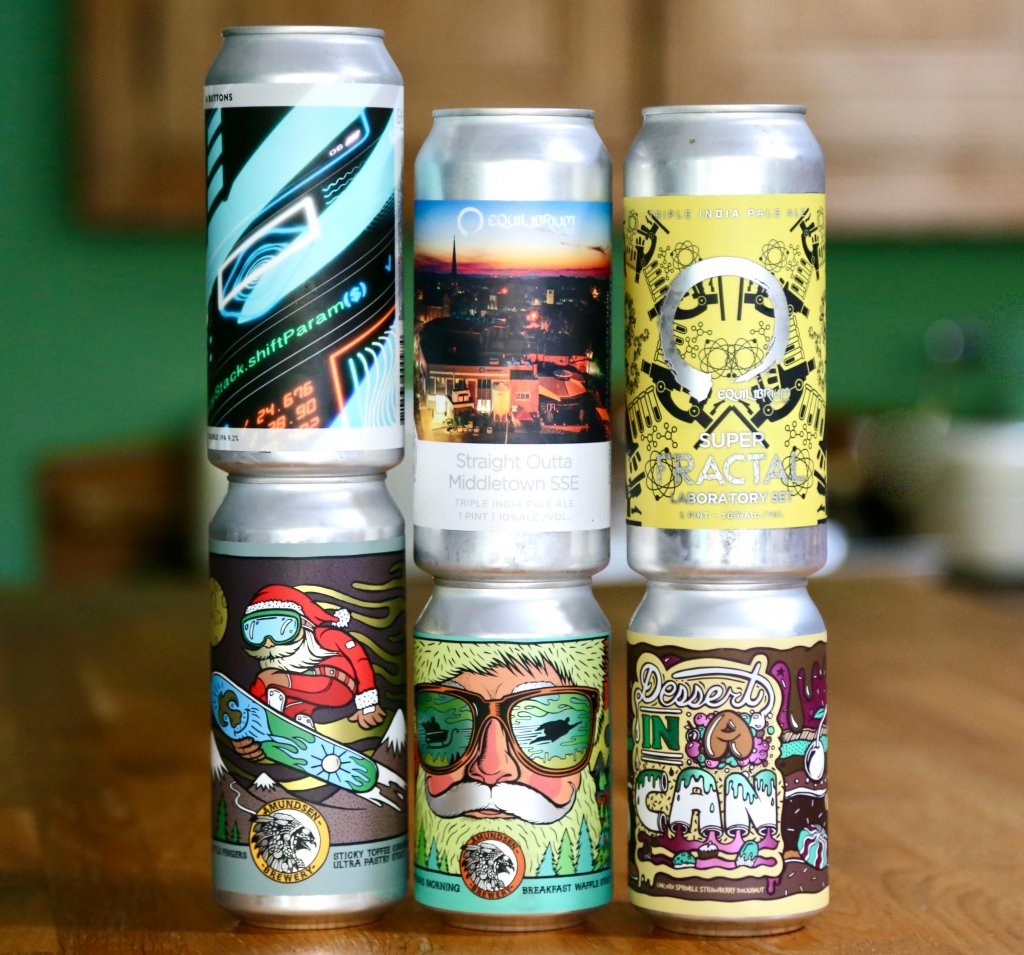
Gamma Brewing, Smedeholm, Denmark
It’s an unavoidable fact that imported beers are pricey. The cost of shipment needs to be accounted for. And increasingly these days, breweries favour cold-chain shipments (keeping their beers cold all the way from production to sale, for freshness). It’s another factor that eeks up the price. So when you look for imported beer, it’s pretty crucial you don’t end up wasting your furlough payments on brews that aren’t up to scratch. Gamma brews, I reckon, are among the best bang-for-your-buck imports anywhere in existence.
There are two sides to Gamma’s unmistakable MO. On the one hand you’ve got their clean, hoppy, smooth and expertly executed beers. On the other, there’s a rotating smorgasboard of murky hop-monsters. There’s an air of Burnt Mill about the brews on offer (Burnt Mill being a UK-based brewery I also love). Just like at Burnt Mill, the Gamma brewers seem to take a lot of time and care over all that goes into each of their creations. From ingredients and flavour profile to design and even can art, there’s something in these beers that signals nothing was rushed and no corners were cut.
Gamma are a wonderful example of the art behind brewing great beers.
Amundsen Bryggeri, Oslo, Norway
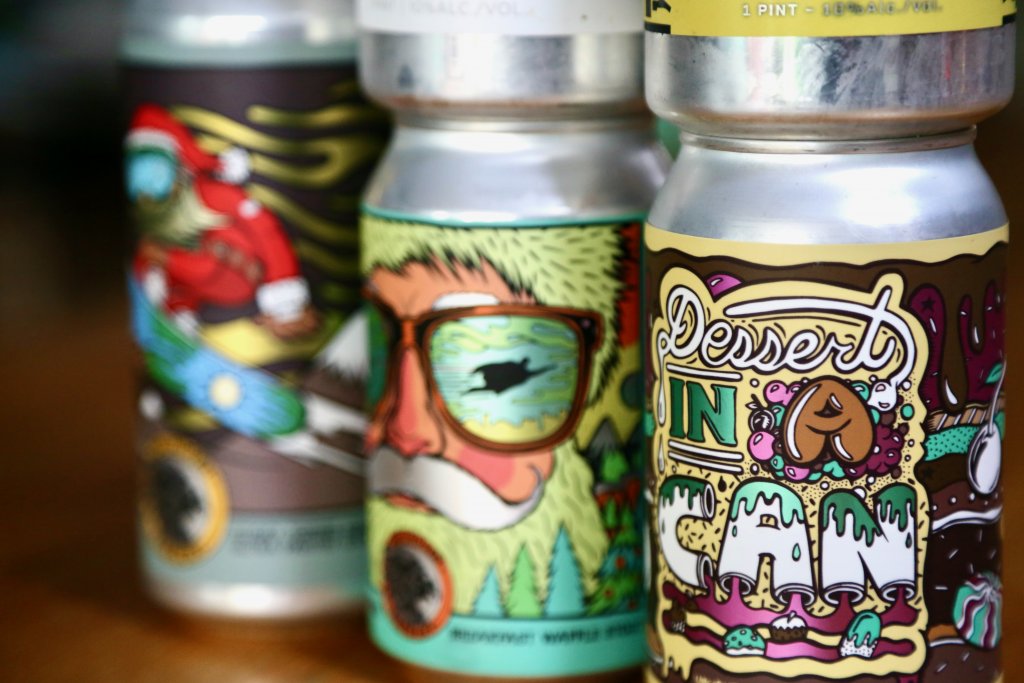
It’s quite something that, despite being a craft brewery, Amundsen has become Norway’s biggest brewery. It’s a well deserved accolade for a brewery that prides itself on their craft. ‘Created by Craftsmen’ is the brewery’s motto, and a delve into any of their wares will return a strong reward for anyone looking for something unique and unconventional.
Sweep aside the (perfectly good) hoppy beers and shuffle straight to Amundsen’s loopy section – dark, sour, barrel-aged; this is where the real fun is. The DIC (Dessert in a Can) series is a great example of what this brewery does so well. These imperial stouts have none of the grown-up appeal of, say, a Kernel or a Buxton beer. Instead they swing right to the other end of the spectrum, combining high sugar, heavy adjuncts and 10%+ ABVs to create beer monsters and flavour freaks. Who’s for a can of Chocolate Covered Salted Toffee Popcorn? Or a Hazelnut Praline Chocolate Truffle stout? A Unicorn Sprinkles Strawberry Doughnut? You get the idea. Wonderful, wacky stuff.
The cans themselves reinforce the madness, adorned with glooping marshmallow-style text as they almost always are. While the concept isn’t for everyone, just to think about making such unorthodox beers – let alone going ahead and making them – is a triumph. And as the brews have helped make Amundsen the biggest brewery in the land, they’re clearly much more than the gimmick purists might suggest.
Equilibrium Brewery, NY, USA
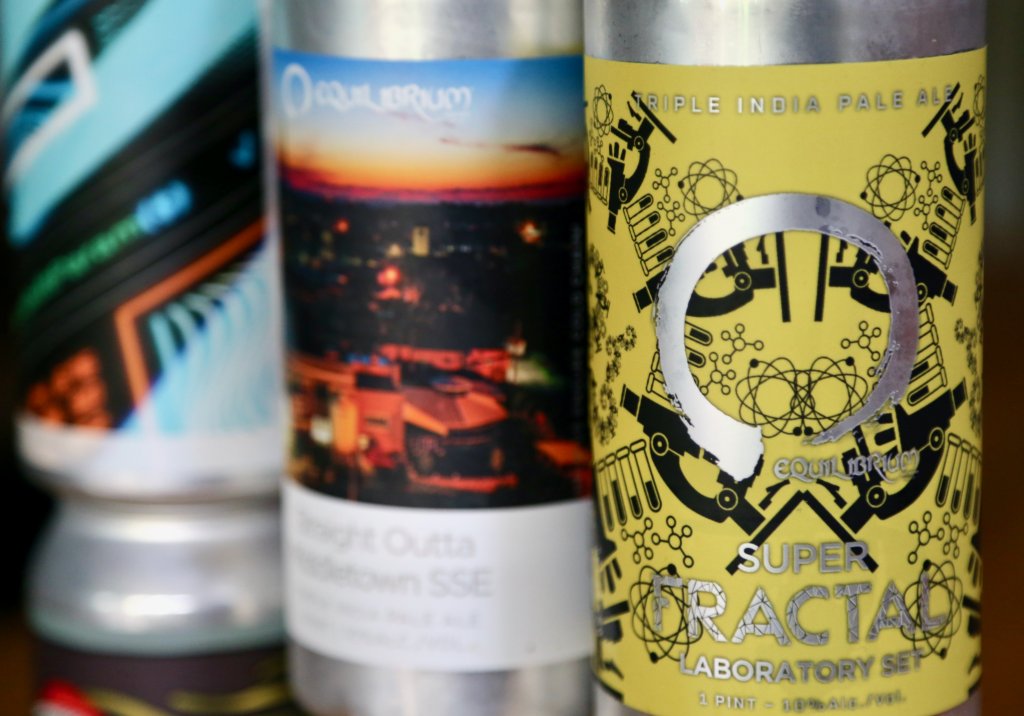
If you want the best hoppy beers in the world then America is where they are. Said a sheep-like beer drinker. More than once. It’s an oft-argued ‘opinion’ that inevitably leads to discussions on craft beer’s beginnings.
In the early days, the discussion goes, the UK made ‘real ale’. Decent stuff, and certainly an improvement that curtailed the exponential rise in mass-produced lager. The Americans tried it. They fell in love with both the idea and the product. So enamoured they were that they took real ale back to the States and started tinkering with it. They added some experimental and out-there hops. They brought it back. It was amazing, the revolution was born and the UK has been playing catch up ever since.
That’s one way of interpreting the current state of play, anyway. The flip side is UK breweries such as Pressure Drop, Polly’s and DEYA are all making beers at least as good as, if not better than, their trans-Atlantic counterparts. But whichever way you look at it, it’s hard not to agree that the US has historically been and remains a driving force for the changing face of craft beer worldwide. Today, the UK and US seem to rely on each other for new ideas and inspiration and team up to push the boundaries of craft brewing ever further. It’s against this backdrop that the appropriately named and Equilibrium Brewery continually comes up with some of the most sought-after beers either side of the pond. Whether it’s enjoyed via Equilibrium’s lactose-laced Double IPAs or their juicy Triples, the quality here is always assured. If you want to see what all the whoopin’ and hollerin’ you hear about stateside brews is all about then look no further. Equilibrium showcases all.
Thanks for reading out craft beer blog this month. I hope you enjoyed it.
Oli, Craft Metropolis founder.
In craft beer circles, every year that unfolds eventually becomes the year of something or other. Certain yeasts, for example. Or certain varieties of hops. More often than not, certain beer styles take the annual ‘year of’ crown – like back in 2018, when everyone seemed excited about brut IPA. I’ve reported before that every year seems poised to become ‘lager year’ (and every year, it never is). This year, there’s a clear title winner already: 2020 is the year of the triple IPA (TIPA), a beer style characterised by an intense hop profile and an ABV that regularly climbs beyond 10%. This year, everyone’s been brewing them. Who wore it best, you ask? Here are three of my personal favourites.
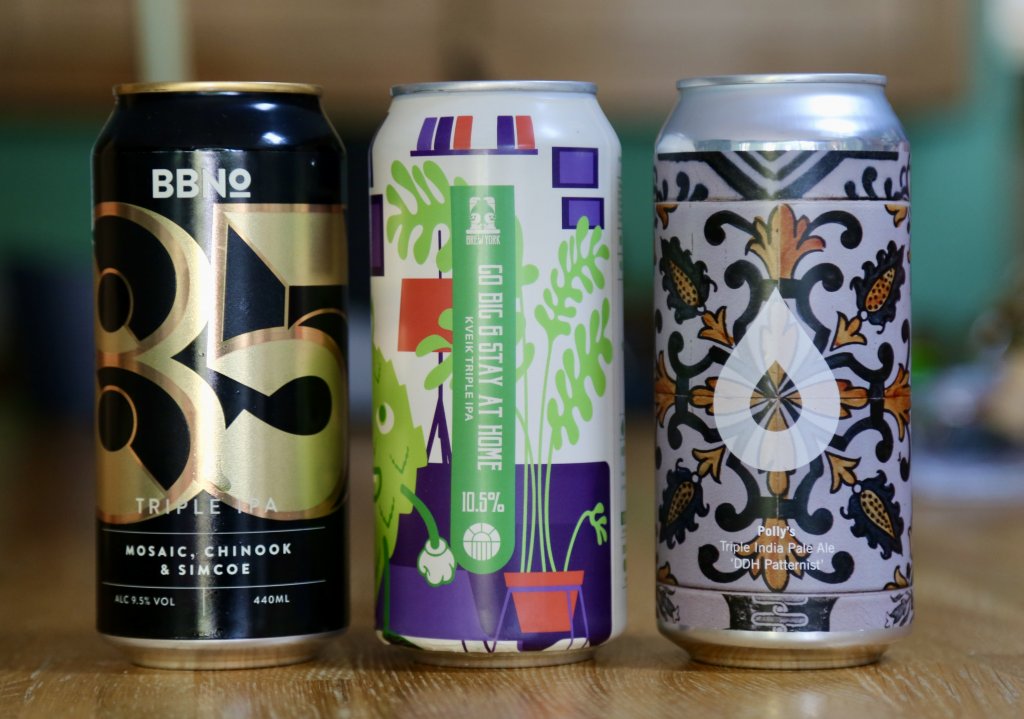
It’s hard to not start with the easiest drinker in the category. Let’s be honest, when you’re dealing with beers that regularly come with double-digit ABVs – especially when they aren’t fireside sippers like imperial stouts – then ‘easy-drinking’ is quite a sought-after quality. Brew by Numbers have always delivered great beers with higher ABVs than the corresponding flavour profiles suggest. Anyone that’s ever tried one of their 55 Double IPA series will almost certainly agree. Would their new 85 Triple IPA follow suit? And what particular nectar variety might it bring us?
Sweet fruit juice is the answer! The current version in the BBNo’s 85 series is a beer that pours very hazy and delivers wave upon wave of ripe (and overripe) stone fruit like peach and mango from the trio of hops BBNo’s brewers use. What really sets the beer apart is the smoothness from the oats the BBNo team add to the brew’s malt bill. It’s a quality that dials down the bitterness (that’s just about lurking) and makes 85 Triple IPA insanely drinkable. It’s complex, juicy and scarily easy to drink! From DIPAs to TIPAs, I’m not sure there’s a UK brewery that consistently delivers high-ABV, hoppy beers better than Brew by Numbers.
With Brew York, you always know they’ll take on a challenge. You can also be pretty certain they’ll serve up on-trend brews, so it was hardly a surprise to see them brewing a triple IPA as soon as it looked like it may be flavour of the season. Brew York is the brewery that brought us delights like Tonkoko – a coconut and tonka bean stout – and Extra Brownie Pints – an absolute chocolate slab of an imperial monster. To put it mildly, the brewery has the darker stuff nailed. But lighter stuff always receives more scrutiny; it’s tough to hide suspect subtleties in lighter beers. With their new triple, however, Brew York have not only cracked the of-the-moment style but have gone and scored bonus points by using of-the-moment yeast kveik while doing so. Brew York’s TIPA couldn’t be more on-trend if it tried (which, thinking about it, it probably did). Go Big & Stay at Home uses the famous Norwegian yeast strain that imparts an added earthiness and spice to the beer that could be overpowering – but isn’t – and leaves Go Big & Stay at Home slightly drier than other beers of its style. The tweak balances brilliantly the booziness of the TIPA and compliments the slight hop-burn you get from the 10.5% ABV. It’s certainly a combination that works. If you’re looking for a beer that throws together everything new that 2020 brewing has to offer, then this is pretty much it… all in one glass.
Polly’s doesn’t really brew a bad beer. The team also knows plenty about getting the best out of the hops they use. Still, until the latter part of 2020, Polly’s had been serving up soupy IPAs and pale ales only. Obviously keen to join this year’s hop-race with a triple of their own, Polly’s have now brewed not one but two TIPAs in the space of a few months. The result has been nothing short of phenomenal, with a lot of people calling their fist triple – Spur – the beer of the year. Spurred on by this acclaim (sorry), the team set about brewing their sophomore TIPA to quell the calls of those clamouring for more. The result is Patternist. Just like Spur, Patternist has a supercharged hop bill responsible for the bucketloads of flavour on show here. Apparently, Polly’s poured over 60kg of El Dorado and Simcoe hops into Patternist (I’m told that’s a LOT for one Polly’s brew). The hefty hop helping makes this beer – despite its 10% booze levels – pure unadulterated juice! There’s next to zero bitterness in the body and the hit on the tongue is straight up mango, passionfruit and papaya. It’s a joy to behold, and it may be my personal favourite of the three.
Beers of the TIPA strength, of course, have long been the drink of choice for certain park bench gentlemen. But natural brewing evolution has escorted us to a wonderful place, where 10% beers are no longer something to be endured rather than enjoyed while wincing in Belgian-beer-house bravado contests.
Stand alone, hefty TIPAs are genuine beer of the year contenders and any brewery worth their salt should be adding one to their catalogue – assuming they’re up to the challenge of brewing something drinkable despite such high alcohol content. Enjoy TIPAs responsibly. And whatever you do if you sample them, don’t go pouring these three back to back to test my tasting notes – it might be the end of you!
Craft Metropolis is an online beer shop and taproom stocking Triple IPAs, amongst brews of a more sessionable strength!
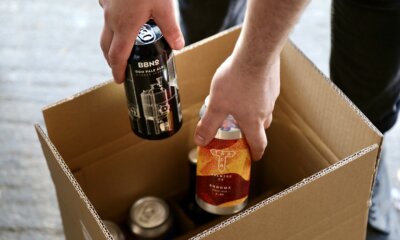 Step 1
Step 1
We trawl the globe tasting great beer
